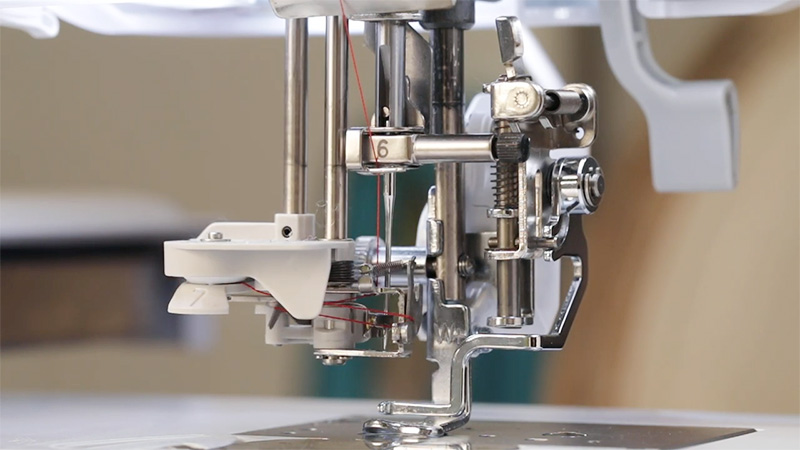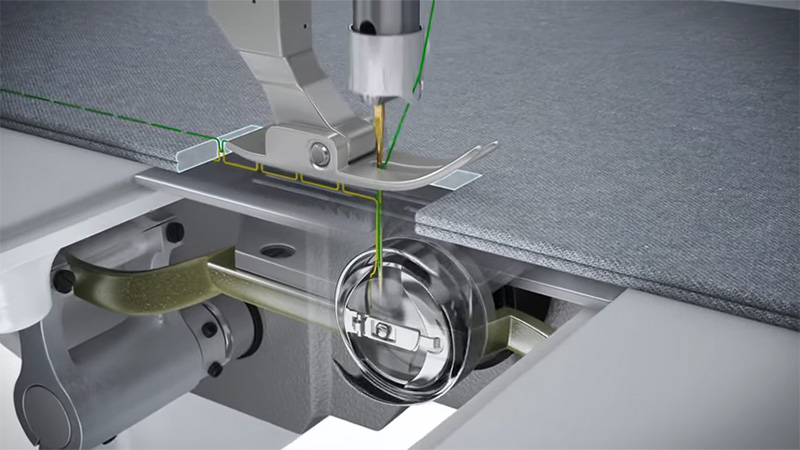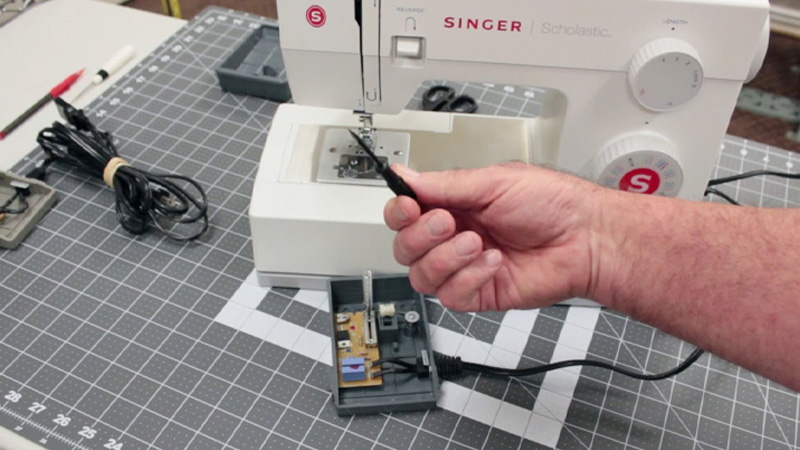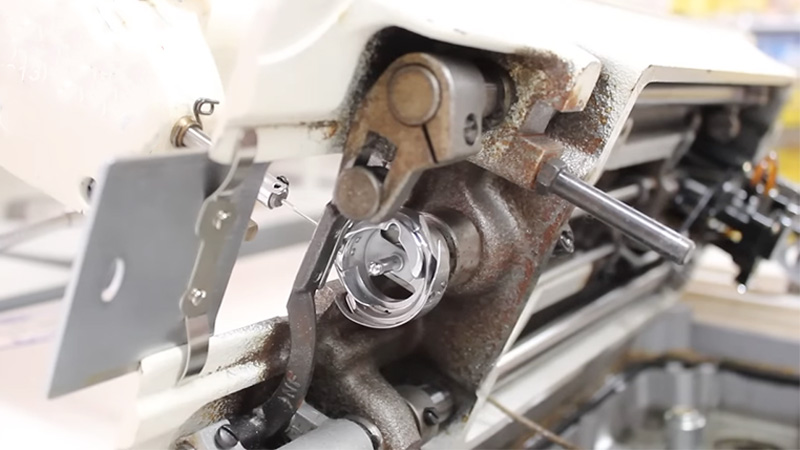Your trusty sewing machine has been your creative companion for countless projects, but suddenly, it seems to be operating in slow motion, leaving you frustrated and your sewing tasks delayed. Don’t let this sluggishness dampen your sewing spirit!
In this guide, we’ll explore sewing machine slow motion – how to fix it, providing you with practical solutions to get it back up to speed.
A sewing machine’s smooth and consistent performance is essential for any sewist, whether you’re a seasoned pro or just starting your sewing journey.
When it starts to crawl instead of sewing at the usual pace, it can be a perplexing issue. From tension adjustments to belt maintenance and troubleshooting other mechanical aspects, we’ll walk you through the steps to diagnose and fix the problem.
Say goodbye to the frustration of sewing at a snail’s pace, and get ready to revitalize your sewing machine’s performance with our expert guidance.

Why Is My Sewing Machine Slow?
A slow sewing machine can be attributed to various factors, and understanding the underlying reasons can help you troubleshoot and address the issue. Here are some common reasons why your sewing machine may be running slowly:
Thread Tension
Incorrect thread tension settings can cause your sewing machine to run slowly. If the tension is too tight, it can restrict the flow of thread, resulting in slower stitching. Ensure the tension is adjusted correctly for your fabric and thread type.
Thread Quality
Poor-quality or old thread can lead to slow stitching. Low-quality threads may break more often or cause friction within the machine, reducing speed.
Needle Issues
A dull or damaged needle can slow down the sewing process. Make sure you’re using the correct needle type and size for your fabric and thread, and replace the needle if it’s worn or bent.
Machine Maintenance
Accumulated dust, lint, or debris in the machine’s bobbin area, feed dogs, or needle plate can impede the machine’s performance. Regularly clean and oil your sewing machine as recommended in the manual.
Belt Condition
If your sewing machine uses belts for power transfer, a loose, worn, or damaged belt can cause slow stitching. Check the condition of the belts and replace them if needed.
Motor Issues
Problems with the sewing machine’s motor, such as overheating or insufficient power, can result in slow operation. Ensure that the motor is properly lubricated and free from obstructions.
Pedal and Electrical Connection
Faulty foot pedals or issues with the electrical connection can lead to slow sewing. Check the foot pedal’s functionality and ensure a consistent power supply.
Feed Dogs and Needle Plate
Damaged or obstructed feed dogs or needle plates can impede fabric feeding, causing slow stitching. Inspect these components for damage or debris.
Bobbin Tension
Incorrect bobbin tension can affect sewing speed. Ensure that the bobbin is wound evenly and inserted correctly into the bobbin case.
Fabric Choice
Some fabrics, such as heavy denim or multiple layers, naturally require slower stitching speeds for best results. Adjust your sewing machine’s speed accordingly.
By identifying the specific cause of your sewing machine’s slow operation and addressing it accordingly, you can often restore normal sewing speed.
Regular maintenance, proper threading, and using quality materials are essential for keeping your sewing machine running smoothly.
If the problem persists despite troubleshooting, it may be advisable to seek professional servicing to diagnose and resolve any internal issues.
Sewing Machine Slow Motion: How to Fix It?

If your sewing machine is operating in slow motion, it can be frustrating, but there are several potential reasons for this issue, along with corresponding solutions. Here’s a guide on how to fix a sewing machine that’s sewing slowly:
Thread Tension Adjustment
Incorrect thread tension can cause your machine to sew slowly. Check the upper thread tension settings in your sewing machine manual and ensure they are correctly adjusted for your fabric and thread type.
Bobbin Tension Check
Improper bobbin tension can also affect sewing speed. Ensure that the bobbin is wound evenly and correctly inserted into the bobbin case. Low-quality or old thread can cause slow stitching. Use high-quality thread suitable for your fabric.
Needle and Thread Compatibility
Ensure you’re using the correct needle type and size for your fabric and thread. Mismatched combinations can lead to slow sewing.
Machine Cleaning
A buildup of lint, dust, or debris in the machine’s bobbin area, feed dogs, or needle plate can impede the machine’s performance. Clean the machine thoroughly and oil it as per the manufacturer’s recommendations.
If your sewing machine uses belts for power transfer, check for loose, worn, or damaged belts. Replace any worn-out belts.
Motor Lubrication
Lubricate the sewing machine’s motor if it has oiling points specified in the manual. A well-lubricated motor can improve speed and performance.
Ensure the foot pedal is functioning correctly, and the power source is delivering consistent power. Faulty pedals or electrical issues can affect sewing speed.
Feed Dogs and Needle Plate
Inspect the feed dogs and needle plate for damage or obstructions. Damaged parts can hinder fabric feeding and cause slow stitching.
If you’ve tried the above steps and the problem persists, consider having your sewing machine professionally serviced. There may be internal mechanical issues that require expert attention.
By systematically troubleshooting these potential causes and applying the appropriate solutions, you can often restore your sewing machine to its normal sewing speed.
Regular maintenance and proper care can help prevent future slowdowns, ensuring your sewing machine remains a reliable tool for your crafting endeavors.
How Do I Adjust the Speed of My Sewing Machine?

Adjusting the sewing speed on your sewing machine typically involves controlling the pressure you apply to the foot pedal. Here’s how you can adjust the sewing speed:
Foot Pedal Control
The foot pedal, also known as the foot controller or foot control, is the primary tool for adjusting sewing speed. It functions much like the gas pedal in a car.
Lightly press the pedal for slower sewing, and press it harder for faster sewing. Practice using different levels of pressure to achieve the sewing speed you desire.
Speed Control Slider or Dial
Some modern sewing machines have a speed control slider or dial on the machine’s front panel. This allows you to set a maximum sewing speed, limiting how fast the machine can sew. Adjust the slider or dial to your preferred maximum speed.
Stitch Length Adjustment
In some cases, adjusting the stitch length can indirectly affect the sewing speed. Longer stitches may require the machine to move more slowly, while shorter stitches can result in faster sewing.
Refer to your sewing machine’s manual to understand how stitch length settings affect sewing speed.
Practice and Familiarity
Getting comfortable with your sewing machine’s speed control takes practice. Spend time sewing on scrap fabric to adjust to the pedal’s sensitivity and find the speed that suits your sewing style.
Use Slow-Speed Features
Some sewing machines come with a slow-speed feature or a “start/stop” button that allows you to sew without using the foot pedal. This can be useful for precise, controlled sewing at a consistent speed.
Lubrication and Maintenance
Ensure that your sewing machine is well-maintained. Lubricate moving parts as recommended in the manual to prevent any mechanical issues that might affect speed control.
Consult Your Manual
Always refer to your sewing machine’s user manual for specific instructions on adjusting sewing speed and understanding any unique features or settings your machine may have.
Remember that sewing speed can also be influenced by the type of fabric you’re working with and the complexity of your sewing project.
Take your time when working on intricate details and use higher speeds for long straight seams or less complex tasks. With practice and familiarity with your machine, you can achieve the desired sewing speed for each project.
How to Slow Sewing Machine Down?

If you find that your sewing machine is stitching too quickly and you want to slow it down, here are some steps you can take to achieve a slower sewing speed:
Foot Pedal Control
Adjust your sewing speed by varying the pressure you apply to the foot pedal. Lightly press the pedal for slower sewing and increase pressure for faster sewing. Practice finding the right balance that suits your desired speed.
Speed Control Slider or Dial
Some sewing machines come equipped with a speed control slider or dial on the front panel. This allows you to set a maximum sewing speed. Turn the slider or dial to lower the maximum speed to your preferred level.
Stitch Length Adjustment
Adjusting the stitch length can also affect sewing speed indirectly. Longer stitches may require the machine to move more slowly, while shorter stitches can result in faster sewing. Experiment with different stitch lengths to achieve the desired speed.
Slow-Speed Features
Check if your sewing machine has a slow-speed feature or a “start/stop” button. Using these features, you can sew without using the foot pedal, allowing for precise, controlled sewing at a slower pace.
Use Slow-Speed Setting
Some sewing machines have preset slow-speed settings or “tortoise” modes designed for delicate or intricate sewing. Consult your machine’s manual to see if it offers such settings and how to activate them.
Thread and Needle Selection
Using thicker thread and a larger needle size can naturally slow down the sewing process, as the machine may need to take more time to accommodate these materials.
Maintenance
Ensure that your sewing machine is well-maintained, as a well-lubricated and properly serviced machine is more likely to operate at the desired speed. Regular cleaning and oiling, as per your machine’s manual, can help maintain consistent performance.
Practice and Familiarity
Getting accustomed to your sewing machine’s speed control takes practice. Spend time sewing on scrap fabric to fine-tune your control and achieve the speed that suits your sewing style.
Consult Your Manual
Always consult your sewing machine’s user manual for specific guidance on adjusting sewing speed and understanding any unique features your machine may offer.
Remember that slowing down the sewing machine is often a matter of practice and finding the right settings or techniques that work best for your specific project and sewing style. With time and experience, you’ll become more adept at achieving the desired sewing speed.
FAQs
Yes, it’s normal for sewing machines to slow down when working with thick fabrics. The machine may need to exert more power to sew through multiple layers, which can result in a slower stitching pace.
Some sewing machines offer slow-speed settings or “tortoise” modes designed for delicate or intricate sewing.
Consult your machine’s manual to see if it has such a feature. If not, you may be able to achieve a consistent slow speed by gently controlling the foot pedal.
Some sewing machines have a feature known as “gradual start” or “slow start,” where the machine starts slowly to prevent fabric from being pulled too quickly. This is a safety feature and is typically a normal operation.
Most modern sewing machines provide some level of speed control, either through the foot pedal or speed control settings. However, the extent and methods of adjustment may vary between different machine models.
Some decorative stitches and zigzag patterns involve more complex movements of the needle and feed dogs, which can naturally result in a slower sewing speed.
These stitches often require more precision, causing the machine to operate at a reduced speed.
Conclusion
A sewing machine operating in slow motion can be a frustrating challenge for any sewist.
However, armed with the knowledge and troubleshooting steps provided in this guide, you can address the issue and restore your sewing machine’s speed and efficiency.
We’ve covered a range of potential causes, from tension and thread-related issues to belt maintenance and mechanical troubleshooting.
By systematically addressing these factors and following our step-by-step solutions, you can breathe new life into your sewing machine and get back to your creative projects with confidence.
Remember that regular maintenance and attentive care for your sewing machine are key to preventing future slowdowns.
With the right adjustments and a little TLC, your sewing machine can once again be your trusted companion, stitching away at the perfect pace for all your sewing adventures. Happy sewing!
Leave a Reply